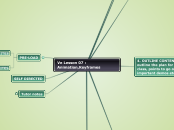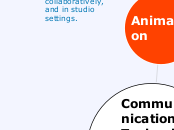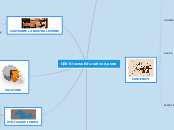Ve Lesson 07 : Animation,Keyframes
Tutor notes
4. DAILIES AND PRESENTATION
Get your students to present their work often to their peer group and even others and be questioned by someone in a manager/client role. Get them to justify their approach and thinking behind it. Beware of smooth talking salesmen.
3. SET LIMITATIONS
3.LIMITATIONS : A Vast array of choice can sometimes deadened for creativity. Ensuring students learn through invention based on small number of options in the face of limitation is an useful tactic, rather than emphasising what each menu heading does and the sheer number of options available.
2. SHORTCUTS AND TEMPLATES
Tutors can accelerate learning by demonstrating setting optimum shortcuts and useful templates, explaining standard processes to make things look good and outlining elements that affects pipeline.
1. FIRST STEPS
SELF DIRECTED
PRE-LOAD
Pre-load is given students days or a week prior to the lesson if possible so they can study it at home before they come to class so they wouldn't start with a blank slate in your class.
SUGGESTED CO-REQUISITES
SUGGESTED PRE-REQUISITES
Using Google and the links below research (individually) each animation of the 12 basic principles of animation.
Requisite taken from different lessons
RESOURCES
references
Great refrence
The Foundry
Nukepedia
Disney Animation: The Illusion of Life
work files
5. LEARNING ACTIVITIES : Demos, playing with files, exercises in class, solve problematic shot or swap work with VFX students
In groups of 2 or 3, students will be given 20 mins to research 3 of the 12 animation principles.
Group 4
12 Appeal
1.11 Solid drawing
10 Exaggeration
Group 3
9 Timing
8 Secondary action
7 Arcs
Group 2
6 Slow in and slow out
5 Follow through and overlapping action
4 Straight ahead action and pose to pose
Group 1
1.3 Staging
2 Anticipation
1 Squash and stretch
4. OUTLINE CONTENT/TOPIC : outline the plan for that day's class, points to go over, important demos etc.
At the start of the lesson as a group you will show and discuss the compositing project you worked on over the break week. After the break you will be put into groups of 3 people you haven't yet worked with and brainstorm 3 of the 12 basic principles of animation. After 20mins students will present their findings to the class. A brief lecture will follow on Animating within Nuke and after effects, introduction to the graph editor, Dope sheet ease ins and outs etc... Students will then use your new knowledge on the animation principles to create a 2D bouncing ball within Nuke or after effects.
3 .LEARNING OUTCOMES: On completion students will be able to demonstrate
Able to demonstrate key core animation principles.
understand underlying principles and tool sets that will enable students to understand key framing and animation not limited to any specific program.
Develop fundamental animation skills.
2. AIMS : This lesson aims to :
By the end of this lesson you will have knowledge of animating and manipulating key frames within Nuke. You will make a simple ball animation and demonstrate the 12 basic principles of animation.
1. LESSON DESCRIPTION
Nuke Animating, Graph editor and Dope sheet









